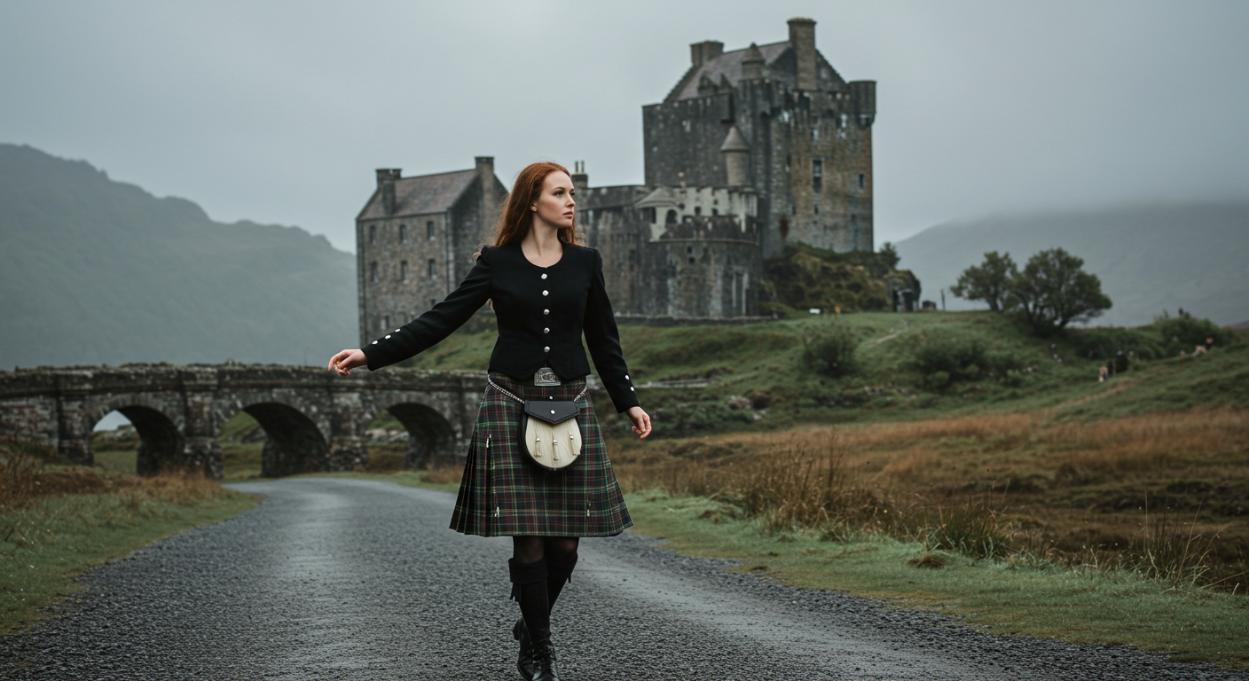The Timeless Appeal of Tartan Kilts for Women: A Fashion Statement Through the Ages

Tartan kilts have been a symbol of Scottish tradition for centuries. Although they originally served as practical garments for Scottish men, women have embraced them as fashionable and iconic statement pieces over time. Today, tartan kilt women's are a nod to history and a dynamic and stylish addition to any wardrobe. Whether into their rich heritage or versatility in contemporary fashion, tartan kilts continue to captivate women's fashion worldwide. But what makes this centuries-old garment so timeless?
The Historical Roots of Tartan Kilts
The tartan kilt's history is firmly rooted in Scottish culture, where the garment first became known as part of the traditional Highland dress. The earliest forms of the kilt were worn in the 16th century, initially as a large piece of fabric draped around the body, called the "great kilt" or failed mór. This garment was practical, providing warmth and flexibility to the Highlanders. It was usually worn with a belt and could be adjusted to fit the wearer's needs throughout the day. While men wore the great kilt regularly, women's use of kilts was much less common, and their attire typically consisted of more straightforward, practical dresses.
As the centuries progressed, kilts became more refined and tailored, with distinct tartan patterns emerging that represented various Scottish clans. Each clan had its unique tartan design, and the kilts became an expression of identity and status. Women, especially in the early days, did not wear tartan kilt ladies like men did. Still, the influence of Scottish fashion eventually seeped into women's wardrobes.
The Evolution of Tartan Kilts in Fashion
While men primarily wore the kilt for much of its history, women began adopting versions of the kilt in the 18th and 19th centuries. The resurgence of interest in Scottish heritage during the Victorian era helped pave the way for integrating tartan kilts into women's fashion. Queen Victoria played a significant role in this revival when she visited Scotland and embraced traditional Highland dress, including the tartan kilt. Her influence helped establish the tartan pattern as an enduring symbol of Scottish culture.
The 20th century saw further adaptation and modernization of the kilt, especially after the Scottish Nationalist movement gained momentum. Tartan kilts became more than just a symbol of regional identity—they represented national pride. In the mid-1900s, designers began incorporating tartan kilts into women's fashion collections, transforming them from traditional garments into stylish, contemporary pieces.
Today, tartan kilts are designed in various fabrics, cuts, and colors to suit a wide range of tastes, making them a popular choice for women who want to incorporate bold, timeless pieces into their outfits.
The Symbolism Behind Tartan Patterns
One of the most compelling aspects of the tartan kilt is the meaning behind the patterns themselves. Tartan patterns are created by weaving horizontal and vertical stripes of different colors, often in a grid-like fashion. Each pattern represents a specific clan or region of Scotland. For instance, the Royal Stewart tartan, one of the most famous designs, is associated with the Scottish Royal family. In contrast, other tartans represent particular Highland clans, with colors and patterns passed down through generations.
The colors within the tartan design also carry symbolism. Red, green, blue, and black are common in many tartan kilt for women and mens, each associated with various meanings. Red, for instance, often signifies strength, while green is associated with nature and the land. Women can connect to these symbolic meanings by wearing a tartan kilt, whether they are of Scottish descent or appreciate the deep cultural significance of these patterns.
Moreover, in modern fashion, tartan kilts have evolved beyond their familial and clan connections. They are often chosen for aesthetic reasons or to reflect personal style. Tartan is a versatile pattern that allows women to showcase individuality while embracing tradition.
Tartan Kilts as a Statement Piece in Modern Women's Fashion
One of the reasons tartan kilts remain so relevant in today's fashion world is their versatility. Tartan kilts are no longer limited to formal occasions or Highland games—Now on runways, in casual street style, and even at high-end fashion events. Today's women wear tartan kilts in ways that reflect both their fashion sense and their lifestyle.
When styled correctly, a tartan kilt can be dressed up or down. A tartan kilt can be paired with a simple white t-shirt and ankle boots for casual outings, creating a relaxed yet stylish look. On the other hand, when dressed up with a tailored blouse or a chic sweater and heels, it can be worn for more formal events like dinners, gatherings, or parties.
Tartan kilts have also gained popularity among celebrities and influencers, further cementing their place in mainstream fashion. Various designers have incorporated tartan patterns into their collections, ensuring that the kilt remains not just a historical garment but a contemporary wardrobe staple. This shift in style has made tartan kilts a symbol of boldness, individuality, and empowerment for women, proving that traditional garments can be just as fashionable as modern ones.
How to Wear a Tartan Kilt for Women
Tartan kilts offer countless styling possibilities, making them an exciting garment to experiment with. Here are a few tips on how to wear a tartan kilt and make it your own:
- Casual Looks: Pair your tartan kilt with a fitted t-shirt or a cozy sweater. Add a denim jacket or a leather jacket for extra edge, and complete the look with boots or sneakers. It is an excellent option for everyday wear.
- Formal Occasions: For a more polished look, team your tartan kilt with a tailored blouse or a fitted top. Heels or elegant flats can elevate the outfit for a formal setting, such as a dinner party or a cultural event.
- Layering for Seasonal Styling: In colder months, layer your tartan kilt with tights, leggings, or long socks for added warmth. Opt for lighter fabrics during warmer seasons and pair your kilt with a sleeveless top to keep things breezy.
Mixing and matching different pieces, you can effortlessly integrate the tartan kilt into your wardrobe year-round, adding sophistication and a bit of fun to your style.
Tartan Kilts in Pop Culture and Beyond
The tartan kilt's influence stretches beyond the Scottish Highlands. In pop culture, tartan kilts have appeared in numerous films and music videos. From the famous "Braveheart" to punk rock bands like the Sex Pistols, the kilt has been used to symbolize rebellion, national pride, and nonconformity.
Whether worn by characters in blockbuster films or by modern-day fashion icons, the tartan kilt has proven that it is much more than just traditional dress. It's a garment that transcends its origins, allowing women everywhere to make a unique fashion statement.
Why Tartan Kilts Will Always Be In Fashion
Tartan kilts have survived the test of time, transitioning from a practical piece of clothing to a fashionable statement that continues to inspire. Their timeless appeal lies in their rich history, cultural significance, and adaptability in modern fashion. Whether you're drawn to them for their connection to Scottish heritage or love how they look, tartan kilts remain a versatile, timeless wardrobe essential.
In conclusion, tartan kilts for women offer much more than just a trend—they represent a fusion of history, culture, and modern style. With their ability to be casual and elegant and their power to connect wearers to their roots while making a bold fashion statement, tartan kilts are a garment that will never go out of style.


